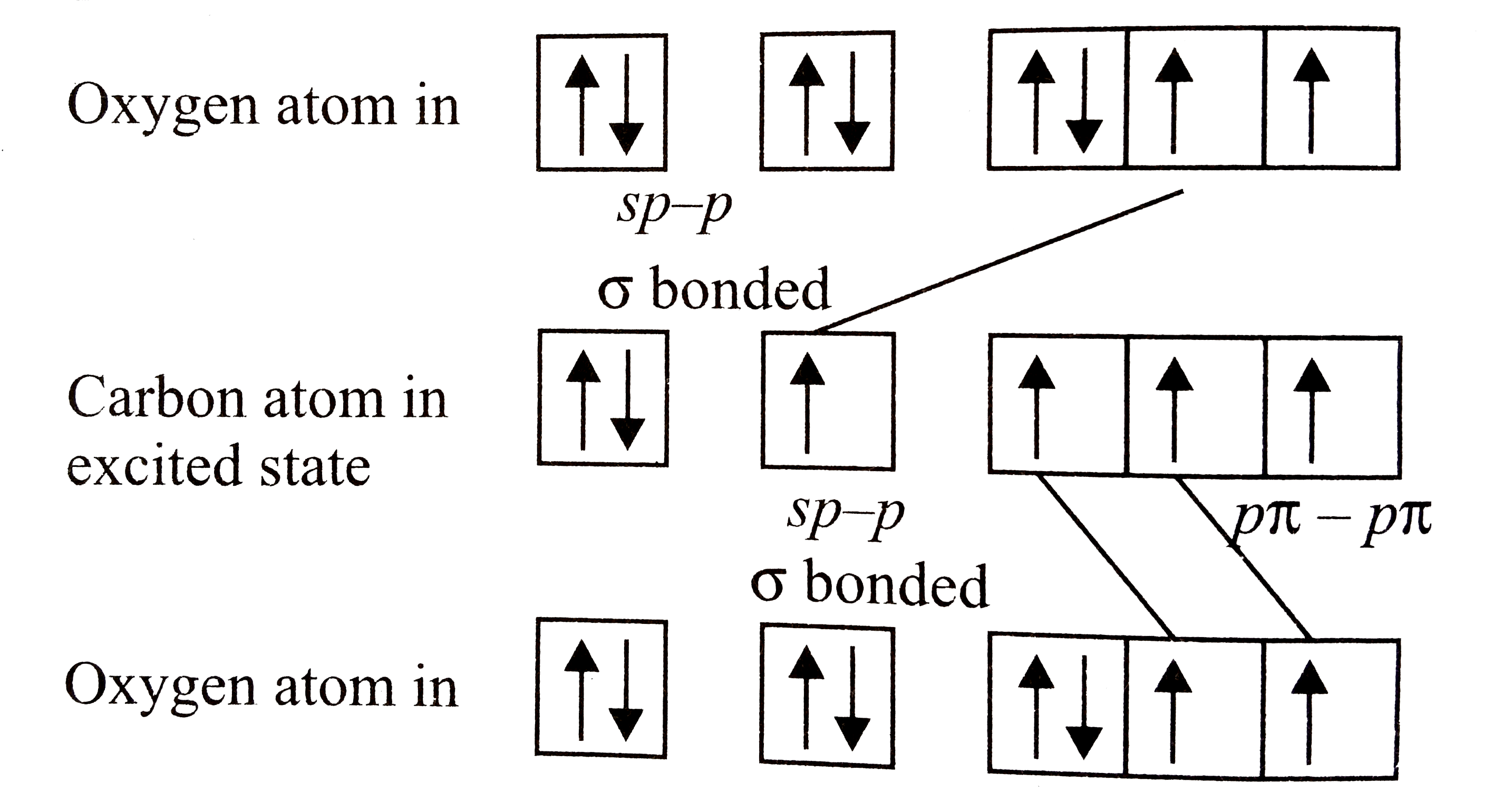The molecule of CO2 has 180∘ bond angle it one be explained on the basic of
sp3 hybrisation
sp2 hybridisation
sp hybridisation
d2sp3 hybridisation
The correct Answer is:c
Cground state=2s2,2p1x2p1y :
Cexcited state=2s2,2p1x2p1y2p1z :
Oground state=2s2,2p2x2p1y2p1z :
In the formation of CO2 molecule of orbital, hybridization of orbitals of carbon occure to a limited exted involving only one x and ane p orbitals .There is this sp this sp hybridisation of vilence shell orbitals of the casrbon atom resulting in the formation of two sp hybrid orbitals.

Topper's Solved these Questions
- CHEMICAL BONDING AND MOLECULAR STRUCTUREBOOK - A2ZCHAPTER - CHEMICAL BONDING AND MOLECULAR STRUCTUREEXERCISE - Assertion - Reasoning Questions
6 Videos
- ATOMIC STRUCTUREBOOK - A2ZCHAPTER - ATOMIC STRUCTUREEXERCISE - Section D - Chapter End Test
30 Videos
- CHEMICAL EQUILIBRIUMBOOK - A2ZCHAPTER - CHEMICAL EQUILIBRIUMEXERCISE - Section D - Chapter End Test
30 Videos
Similar Questions
Knowledge Check
The bond angle in XeF2 molecule is
A120∘B109∘C180∘D90∘Bond angle in H2S molecule is
A90∘B92.1∘C104.5∘D120∘Most of the polyatomic molecules except a few such as CO2 and CS2 are linear or angular with a bond angle generally somewhat greater than 90∘ A bond angle is defined as the angle between the direction of two covalent bonds Since the atoms in molecules are in constant motion with respect to each other they are not expected to have a fixed value of bond angle Repulsion between non-bonded atoms alone does not provide an adequate explanation Hybridisation of bonding orbitals an adequate explanation Hybridisation of bonding orbitals also plays a very important role in detrmining the value of bond angle It has been observed that in hybridisation as the s-character of hybrid orbital increases the bond angle increases
In P4 molecule phosphorous atoms are tetrahedrally arranged The angle P−P−P in the molecule is .A108∘B120∘C60∘D180∘
Bond angle in NH3 molecule is
View SolutionMost of the polyatomic molecules except a few such as CO2 and CS2 are linear or angular with a bond angle generally somewhat greater than 90∘ A bond angle is defined as the angle between the direction of two covalent bonds Since the atoms in molecules are in constant motion with respect to each other they are not expected to have a fixed value of bond angle Repulsion between non-bonded atoms alone does not provide an adequate explanation Hybridisation of bonding orbitals an adequate explanation Hybridisation of bonding orbitals also plays a very important role in detrmining the value of bond angle It has been observed that in hybridisation as the s-character of hybrid orbital increases the bond angle increases
Which of the following hybridisation may have more than one type of bond angle ? .
View SolutionThe molecule having the largest bond angle is :
View SolutionThe molecule having the largest bond angle is :
View SolutionThe shape of a molecule which has 3 bond paires and one lone pair is :
View Solution
